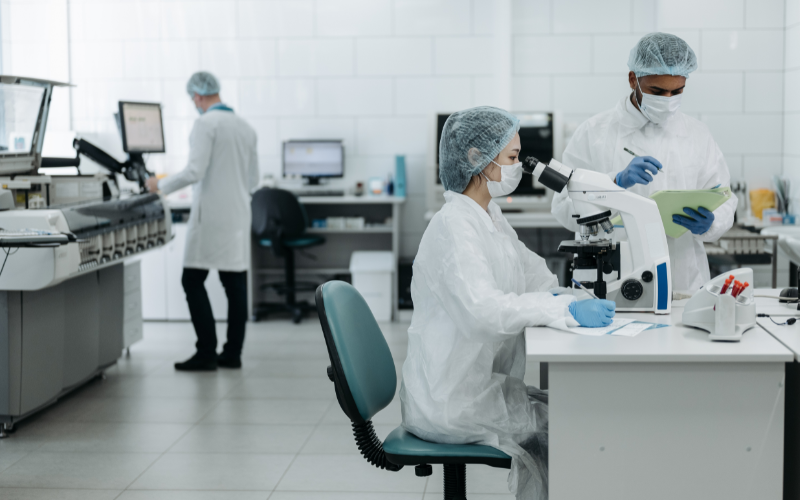Managing a cleanroom effectively is critical for industries that require controlled environments, such as pharmaceuticals, biotechnology, and electronics manufacturing. Ensuring that these environments meet stringent cleanliness standards is essential to prevent contamination and ensure product quality. While standard procedures are widely known and practised, there are advanced strategies that can take your cleanroom management to the next level. In this article, we’ll explore game-changing strategies for cleanroom management that will transform your results, focusing on the optimisation of processes and the utilisation of cleanroom products.
1. Implementing Real-Time Monitoring Systems
Real-time monitoring systems have become an indispensable tool in cleanroom management. These systems provide continuous data on environmental conditions, including temperature, humidity, and particulate levels. By implementing real-time monitoring, you can detect deviations from set parameters immediately, allowing for swift corrective actions that prevent contamination.
This strategy not only ensures compliance with regulatory standards but also improves overall operational efficiency. You can analyse trends and identify areas where adjustments are needed, leading to a more stable and controlled environment. Moreover, the data collected can be used to refine your cleanroom protocols, making them more robust and effective.
To maximise the benefits of real-time monitoring, ensure that your cleanroom staff are trained to interpret the data and respond appropriately to any alarms or alerts. Regular calibration and maintenance of the monitoring equipment are also crucial to ensure accuracy and reliability.
2. Optimising Clean Room Layout for Workflow Efficiency
The physical layout of a cleanroom can significantly impact the efficiency of operations and the potential for contamination. A well-designed layout minimises the movement of personnel and materials, reducing the risk of introducing contaminants into the cleanroom environment. By optimising the flow of work, you can streamline processes and enhance productivity.
Start by analysing the current layout and identifying bottlenecks or areas where cross-contamination risks are higher. Rearrange equipment and workstations to create a logical flow that supports the sequence of operations. Consider implementing zones within the cleanroom, each dedicated to specific tasks, to minimise unnecessary movement.
Additionally, work with cleanroom equipment suppliers to select and position equipment in a way that supports your workflow. For instance, placing essential cleanroom products near their point of use can reduce the time spent searching for supplies, leading to more efficient operations.
3. Enhancing Personnel Training and Compliance
Personnel are one of the primary sources of contamination in cleanrooms, making it crucial to invest in comprehensive training and strict compliance protocols. Beyond basic cleanroom etiquette, advanced training should focus on the correct usage of cleanroom products, proper gowning procedures, and understanding the principles behind cleanroom operations.
Regular training sessions can reinforce best practices and keep staff updated on new cleanroom standards and technologies. It’s also beneficial to implement a compliance monitoring system that tracks adherence to cleanroom protocols. This can include periodic audits, real-time feedback, and corrective action plans to address any deviations.
Moreover, fostering a culture of accountability and continuous improvement within your cleanroom team can lead to higher compliance rates and fewer contamination incidents. Encourage open communication where staff can report issues or suggest improvements without fear of retribution.
4. Leveraging Advanced Cleanroom Cleaning Techniques
Standard cleaning procedures are essential, but advanced cleaning techniques can significantly enhance the cleanliness of your cleanroom environment. These techniques include the use of specialised cleanroom products such as HEPA-filtered vacuums, ultra-low particulate air (ULPA) filters, and advanced disinfection methods.
Incorporating these advanced techniques into your cleaning protocols can remove even the smallest particles that standard methods might miss. For example, using HEPA-filtered vacuums can effectively capture airborne particles before they settle on surfaces. ULPA filters can provide an additional layer of protection by filtering out finer particles, ensuring a higher level of air purity.
Conclusion
Optimising cleanroom management is essential for maintaining the high standards required in industries that rely on controlled environments. By implementing these game-changing strategies—such as real-time monitoring, optimising layouts, enhancing training, leveraging advanced cleaning techniques, utilising automation, and conducting regular risk assessments—you can significantly improve the efficiency, safety, and compliance of your cleanroom operations. These strategies will not only transform your results but also position your cleanroom for long-term success.
For more information about cleanroom management solutions, contact Dou Yee today.








